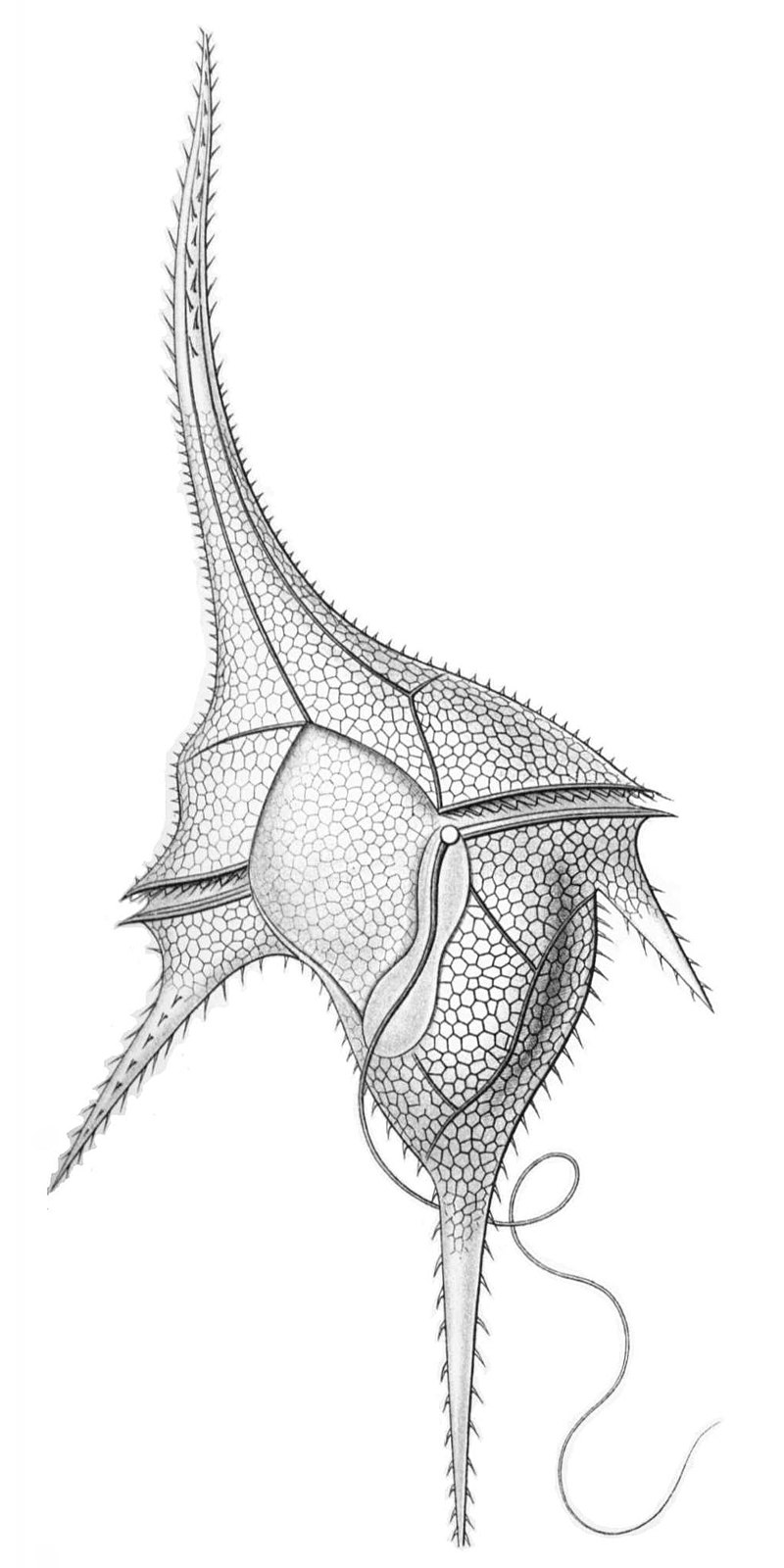
Or, as the title of the story puts it, “unlike any other known”.: One of the main components of plankton in the oceans, dinoflagellates can be parasites or symbionts and include bioluminescent species, photosynthetic species, and species that produce a “red tide.” The species sequenced was Symbiodinium microadriaticum, an important symbiont of corals:
While the updated genome confirms some of what has been suggested by previous work, an unusual relationship between DNA transcription and the shape and organization of their chromosomes reveals that dinoflagellates harbor some of the strangest genomes in the eukaryotic world, according to findings published April 29 in Nature Genetics.
Rather than the flexible, X-shaped chromosomes familiar to humans, dinoflagellates organize their genetic material in orderly blocks along rigid, rod-shaped chromosomes. Genes within blocks are consistently transcribed in one direction and rarely interact with others outside their immediate vicinity. This odd arrangement, the authors found, influences the three-dimensional structure of the entire chromosome.
Amanda Heidt, “Dinoflagellate Genome Structure Unlike Any Other Known” at The Scientist
The paper is open access.
So, in other words, these plankton evolved (randomly, so we are told) a highly successful genome that’s entirely different from the type that most life forms have. Well, if you are skeptical of Darwinian claims that it all happened randomly but just once, how about (at least) twice? Increasingly, Darwinism – or whatever it is that they want to call that stuff nowadays – is for true believers.
See also: Giraffe genome points to maybe four species but it is “not evolutionary”If a big survey of the giraffe genome can’t tell us the answers to the most puzzling questions about one of the most remarkable animals, where should we look for answers next?